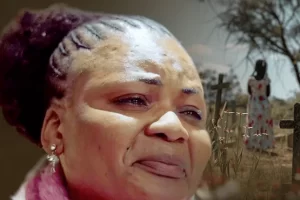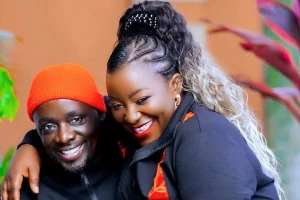The on–and-off switch of the planned 2,935km Standard Gauge Railway (SGR) line from Mombasa to Kigali via Kampala has finally been switched off for now; until further notice. The development comes after Kenyan President Uhuru Kenyatta failed to secure $3.6b funding from China for the final piece of its SGR to Malaba border post. It was to be the third phase of the line connecting Uganda – onwards to Rwanda from Mombasa.
Uganda had dropped a crucial segment of its SGR south-westwards to the Rwandan border and instead preferring taking it northwards to South Sudan. Officially, Kampala says the decision has been influenced by economics. In 2007, the three countries of Kenya, Uganda and Rwanda settled on the $13.5billion SGR shared between them.

The SGR was to be developed in various stages. In Kenya, there would be 736-mile rail from Mombasa through Nairobi to Malaba (Uganda border) and branching off to Kisumu (Kenya). Then there would be an 870-mile rail from Malaba to Uganda’s capital Kampala, and linking to four towns in South-western Uganda before finally rolling on to Rwanda at Mirima Hills/Kagitumba border; a 125-mile line from Mirima Hills to Kigali and an extra 93-mile line to other towns inside Rwanda.
Within three years, Kenya had secured the $3.7b for the Mombasa-Nairobi section and construction already in the works.
Rwanda’s segment was estimated to cost $1.5billion and it would be built from zero, as there is no existing Railway line unlike in its neighbors which have colonial era rails.
So what is a standard gauge railway or SGR? The existing railway between Mombasa and Kampala dates to the colonial times, and has a small gauge (wideness between the rails).
The new line would have the globally adapted gauge (standard), which is wider, and therefore faster and capable of carrying heavier loads.
Rwanda hoped to carry its coffee, tea and other agricultural products and minerals out, and bring in much-needed imports such as machinery into the country. The railway would be designed for freight (speeds of 80kmph), but would be open for other passenger travel too which travels at 120kmph.
Rwanda, Kenya and Uganda signed MoU with the African Development Bank on the financing modalities of the project in February 2014 in Kampala.
The Summit of Heads of State at a summit the same month directed the ministers of finance to explore financing for the project using both the African Development Bank (Africa 50) and the China Exim Bank approaches.
In early May 2014, President Paul Kagame joined East African counterparts involved in the project, Uhuru Kenyatta of Kenya, Yoweri Museveni of Uganda and Salva Kiir of South Sudan in signing a deal with the Chinese Prime Minister, Li Keqiang, on the financing of the first phase of the project (Mombasa-Nairobi).
But by mid 2015, Rwanda was already grumbling. Not much had been achieved on the other sections where Uganda was concerned.
Then in July 2015, Kigali went public. Unnamed Rwandan officials told several local and regional media that Uganda was dragging its feet and unwilling to make any commitments for the railway line.
Uganda had shifted its priority to “a more economically viable line” to South Sudan, on which even until today, nothing has been done yet.
Enters Magufuli in Tanzania
As the quiet war with Uganda was going on, a full scale crisis between Rwanda and Tanzania had been going on since May 2013- which had led to the creation of the so called ‘coalition of the willing’ that sidelined Tanzania’s leader Jakaya Kikwete.
On May 25 that year, inside the closed-door African Union Summit in Ethiopia, Kikwete had told President Kagame in his face that he needed to open talks with the democratic forces for the liberation of Rwanda or FDLR.
Within hours, Rwanda’s foreign minister Louise Mushikiwabo called Kikwete a “spokesman” of FDLR, whose members participated in the 1994 genocide against the Tutsi in Rwanda, and fled to Zaire, DR Congo today.
On June 20, a few weeks later, speaking at the elite Rwanda Military Academy, Kagame called Kikwete’s comments “utter nonsense”.
“I kept quiet about this because of the contempt I have for it. I thought it was utter nonsense. Maybe it was due to ignorance but if this is an ideological problem for anyone to be thinking this way, then it better stay with those who have it,” he said.
“We will have another time to deal with this. As Rwandans, being who we are, achieving what we want to achieve for ourselves is not a myth, it is real”.
For two years, it came close to open conflict. Then in October 2015, Tanzania got a new leader: Dr John Pombe Magufuli.
Within weeks of his election, Rwanda and Tanzania were back in love and cooperation. However, another marriage up north was deteriorating fast.
And in the wake of Kampala’s changed priorities, Rwanda turned to Magufuli, a non-member of the ‘coalition of the willing’ of the northern corridor, for a quicker railway line to the sea.
In October 2017, the first signs of trouble between Rwanda and Uganda became public. Rwanda’s Defence Minister at the time Gen James Kabarebe conducted top secret meetings with senior members of the Rwanda Patriotic Party (RPF) and top business leaders in which he briefed them on Uganda.
Summarized portions of the briefing unintentionally ended up in a WhatsApp group posted by a low level official working in Rwanda’s embassy in Senegal. She has since gone off social media completely.
Gen Kabarebe’s briefings said Uganda’s President Yoweri Museveni was mobilizing Rwandan dissidents to attack Kigali. Rwandan Tycoon Tribert Rujugiro was working with Museveni’s brother Gen Salim Saleh to bankrol the project.
The briefings also showed that Kigali was worried by other “decisions Uganda had taken, which they termed as hostile to Rwanda”─such as the dropping of the Naivasha-Malaba-Kampala SGR line, for a route to South Sudan. Rwanda considered the shift as “economic sabotage”.
With Kagame toiling hard to make sure relations with Tanzania backed on track, the Dar es Salaam-Isaka-Kigali railway line, which had been in planning documents and speeches for many years, was fast tracked.
In early October 2018, Rwanda’s infrastructure Minister Claver Gatete and Tanzanian counterpart Isaack Kamwelwe, met in Dar es Salaam to finalise plans of the $2.5 billion project for 571km-long standard gauge railway line linking Isaka town in Tanzania with Kigali.
On December 11, the two Ministers met in Kigali for the final paperwork. It was the fourth strategic meeting.
The whole project begins from Dar es Salaam. It will be implemented in six phases. The first two sections are already under construction using internal Tanzanian resources, without having to seek foreign financing.
From the $2.5billion needed, Rwanda is required to find Rwf 1.5billion.
“We are working together with African Development Bank to negotiate financial support so that we may begin with sufficient amount of money since the projects itself is higher than the governments’ financial capacity,” said Minister Gatete after the Kigali meeting.
The two sides set February 2019 as the deadline for setting a final timeline on eventual completion of the line.
So when President Uhuru Kenyatta travelled to China for the Belt and Road Initiative summit, his confidence may have been overrated. Indeed, he returned home over the weekend empty-handed without the funding for the Naivasha-Malaba railway line. The SGR rail will stop in Naivasha.
In Uganda, officials were by Sunday still trying to make sense of what had happened. Without the Naivasha-Malaba border rail, Uganda has no SGR segment to connect to.
And that simply means, there is no Malaba-Kampala and Kampala-Kigali rail, at least for now. One of the cards in Rwanda-Uganda conflict notebook may be off the table, but the other thorny issues still remain.




